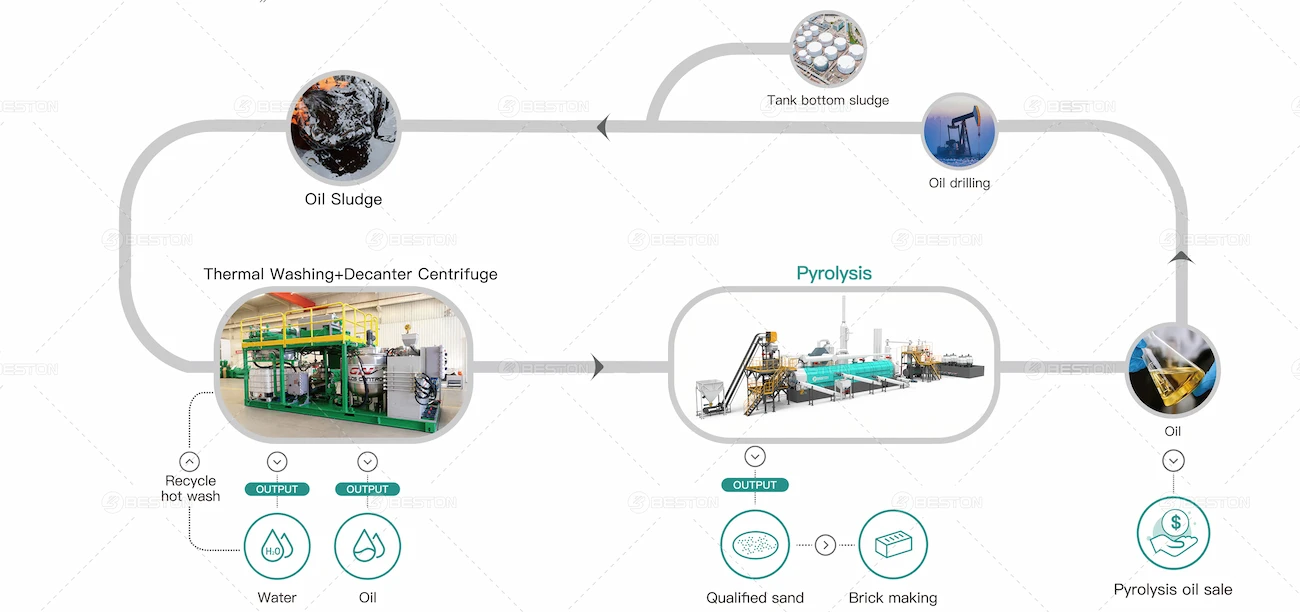Thermal decomposition forms the foundation of pyrolysis technology. By exposing waste materials to elevated temperatures in the absence of oxygen, chemical bonds within complex polymers are disrupted, yielding simpler molecular structures. This controlled process prevents combustion, allowing the recovery of gases, liquids, and solids with commercial and energetic value. A waste rubber pyrolysis plant exemplifies the industrial application of this principle, transforming discarded elastomers into valuable secondary resources.
Molecular Breakdown and Reaction Phases
When subjected to temperatures typically between 300°C and 600°C, organic feedstocks undergo sequential stages of thermal decomposition. Initial heating drives off residual moisture and weakly bound volatiles. As the temperature increases, long-chain hydrocarbons begin to cleave into shorter molecular fragments. Elastomers, plastics, and biomass decompose differently, yet all pass through phases of depolymerization, cracking, and condensation. These chemical transitions generate three distinct product streams: non-condensable gases, condensable liquids, and carbon-rich char.
Mechanisms of Elastomer Degradation
Rubber waste presents unique characteristics due to its vulcanized structure, which incorporates sulfur cross-links. In a waste rubber pyrolysis plant, thermal energy progressively disrupts these cross-linkages, releasing sulfur compounds alongside hydrocarbon vapors. The breakdown of isoprene and styrene-butadiene backbones liberates oils that can be refined into usable fuels. At the same time, carbon black, originally added during tire manufacturing, is recovered as a solid residue, providing further industrial utility. This dual yield of fuel and filler material underscores the scientific efficiency of pyrolysis in managing rubber waste.
Role of Reactor Conditions
Reaction dynamics are heavily influenced by reactor design, residence time, and heating rate. A slow heating process favors char formation with higher fixed carbon content, while rapid thermal input enhances gas and oil yields. Catalytic additives can further refine the decomposition pathway, lowering reaction temperatures and guiding the formation of specific hydrocarbons. In continuous systems, precise control of feedstock input and temperature gradients ensures consistent product quality, reducing the variability that often accompanies heterogeneous waste streams.
Energy Recovery from By-Products
The non-condensable gases released during decomposition contain hydrogen, methane, and carbon monoxide. These gases can be redirected to sustain the internal heating of the reactor, minimizing external energy demand. Liquid fractions, commonly referred to as pyrolysis oil, serve as alternative fuels or can undergo upgrading to improve stability and calorific value. The solid char, enriched in elemental carbon, finds use in metallurgy, construction, or activated carbon production. By harnessing each fraction, pyrolysis plants achieve near-complete valorization of waste materials.
Environmental and Industrial Implications
The science behind thermal decomposition extends beyond chemistry into environmental engineering. By preventing the uncontrolled release of hydrocarbons through landfill decay or open burning, pyrolysis significantly reduces greenhouse gas emissions and toxic effluents. Industrial operators benefit from both waste reduction and resource recovery, converting environmental liabilities into commercial assets. The waste rubber pyrolysis plant illustrates how thermal decomposition principles can address a persistent global waste challenge while reinforcing sustainable industrial practices.
Conclusion
Thermal decomposition in a pyrolysis plant embodies a precise orchestration of heat, chemistry, and engineering. Through controlled molecular disintegration, complex wastes such as rubber are transformed into oil, gas, and char with tangible market applications. The process not only highlights the scientific sophistication of pyrolysis but also its pivotal role in advancing waste-to-resource strategies in modern industry.



No comments:
Post a Comment